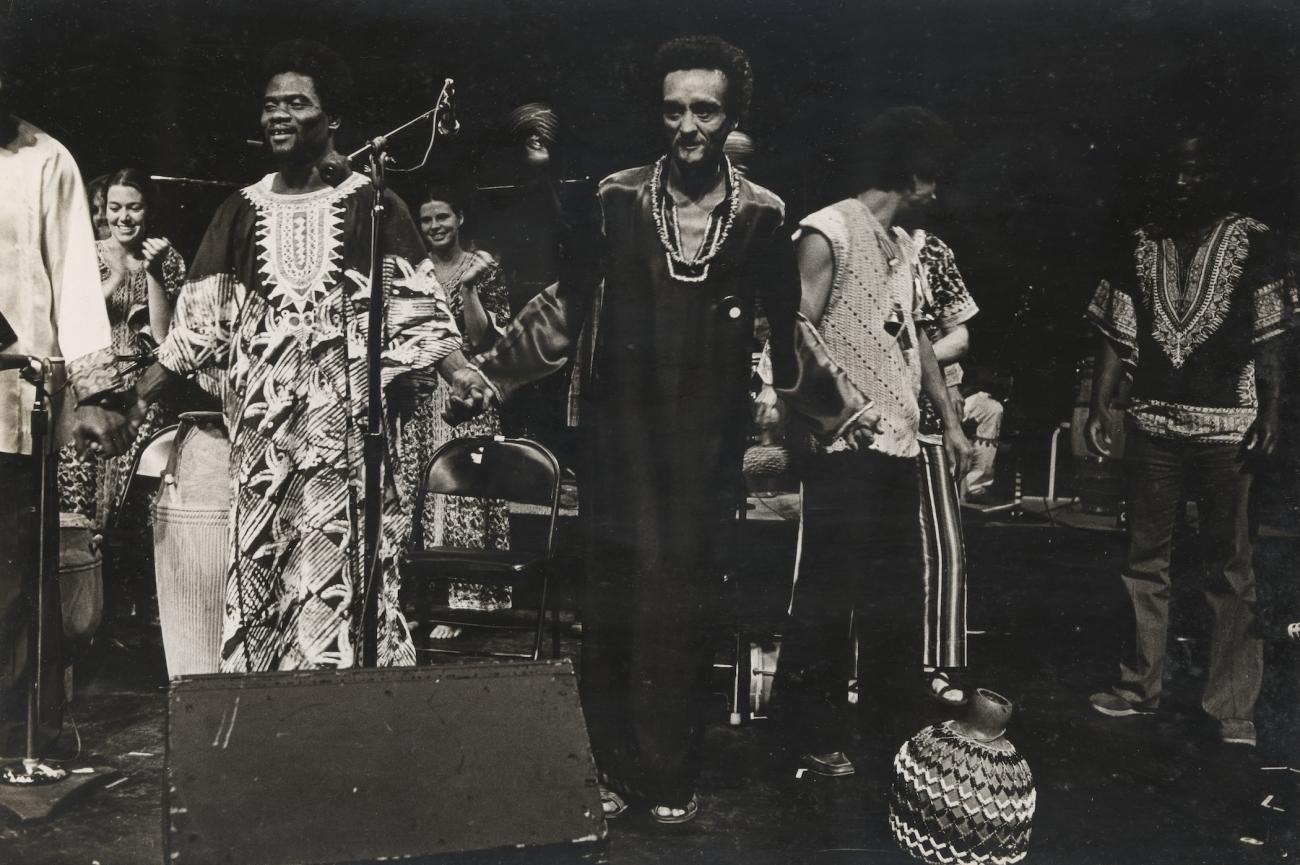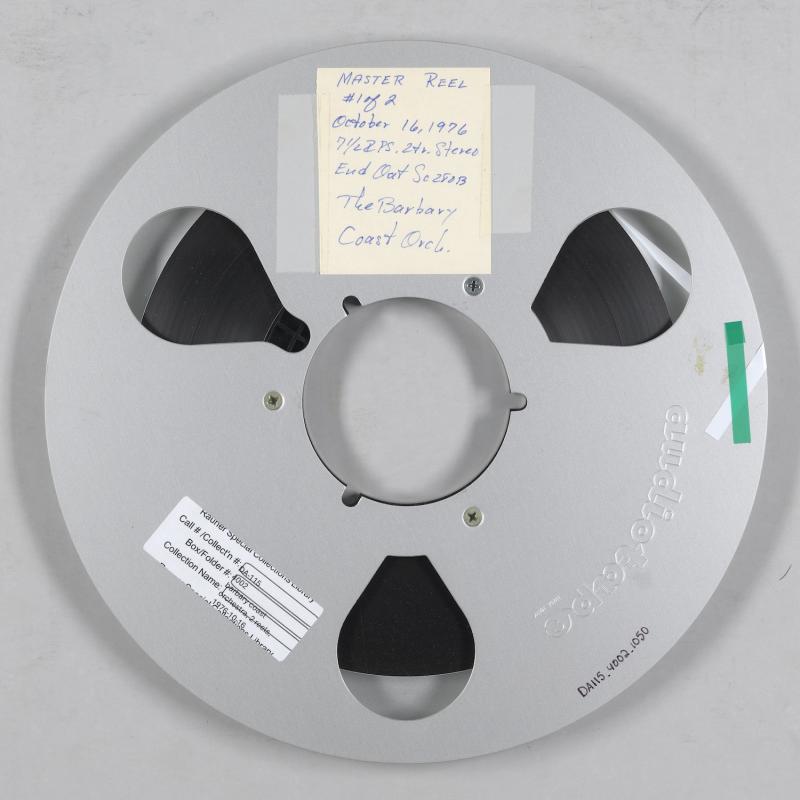
Performers stand onstage in Spaulding Auditorium after the Fourth Cycle, as a part of the John Coltrane Memorial World Music Series. 24 September 1978. From left to right: James "Blood" Ulmer (cut off), Ellie Taylor, Abraham Adzinyah, Roberta Kirn, Bill Cole, Warren Smith, Joseph Daley.
About the Collection
Black Creative Music carries a rich history at Dartmouth, with records of a thriving music scene in this tradition as early as 1915. Although Dartmouth is not known today as a "jazz" school, practitioners of this music at Dartmouth have pushed and expanded the boundaries of what can be considered “jazz,” with pedagogies from the likes of Don Cherry, Robert Northern (known as Brother Ahh), Hafiz Shabazz, and Bill Cole. They believed in the power of this music to elicit greater attunement to the natural world and to humanity.
The Black Creative Music at Dartmouth digital collection contains digital recordings and photographs of magnetic reel to reel tapes, cassette tapes, VHS tapes, DAT tapes, CDs, DVDs, and associated boxes, paper labels, and paper programs from concerts, workshops, and rehearsals, of jazz and Black Creative Music throughout Dartmouth’s history. The digital collection is comprised of objects from various source collections. Some materials are from the private collection of Don Glasgo, the former director of the Coast Jazz Orchestra at Dartmouth (1974–2017), and some materials are housed in the Hopkins Center records, DA-115, at Rauner Special Collections Library. The materials largely document performances and workshops by the Coast Jazz Orchestra (formerly the Barbary Coast Jazz Ensemble), Dartmouth College’s jazz orchestra led by various students (informally from 1915-1974), Don Glasgo (1974-2017), and Taylor Ho Bynum (2017-present). Notable facets of this collection lie in concert recordings of the John Coltrane Memorial World Music Series, started by Professor Cole (1974-1990) while he still taught at Amherst College in 1972. Interestingly, in a series that carried Coltrane’s name, Bill organized programming that featured Indian Classical Music alongside Cameroonian guitar and free jazz. Cole believed that John Coltrane, through his identification of his music as a form of folk music from the African diaspora, “paid tribute to that universal essence” found in other folk musics around the world, like in Asia and Africa. With this collection and associated digital exhibit, the Dartmouth Libraries hopes to bring to light this rich, yet often overlooked, history of Black Creative Music at Dartmouth.
The accomplished artists, who participated in the residencies and performances documented in this collection, include Toshiko Akiyoshi, Marshall Allen, Ray Anderson, Peter Apfelbaum, Francis Bebey, Karl Berger, Byron Bowie, Joseph Bowie, Lester Bowie, Don Cherry, Bill Cole, Ornette Coleman, Jayne Cortez, Joseph Daley, Anthony Davis, Andy Gonzalez, Jerry Gonzalez, Dexter Gordon, Fred Haas, Slide Hampton, Julius Hemphill, Dave Holland, Oliver Lake, Frank Morgan, James Newton, Arturo O’Farrill, Alanis Obomsawin, Sun Ra and his Arkestra, Michael Ray, Sam Rivers, Max Roach, T.V. Sankaranarayanan, Ray Santos, Maria Schneider, Jim Seeley, Woody Shaw, Warren Smith, Lew Tabackin, Cecil Taylor, Clark Terry, James "Blood" Ulmer, Abdul Wadud, James Williams, and more.
